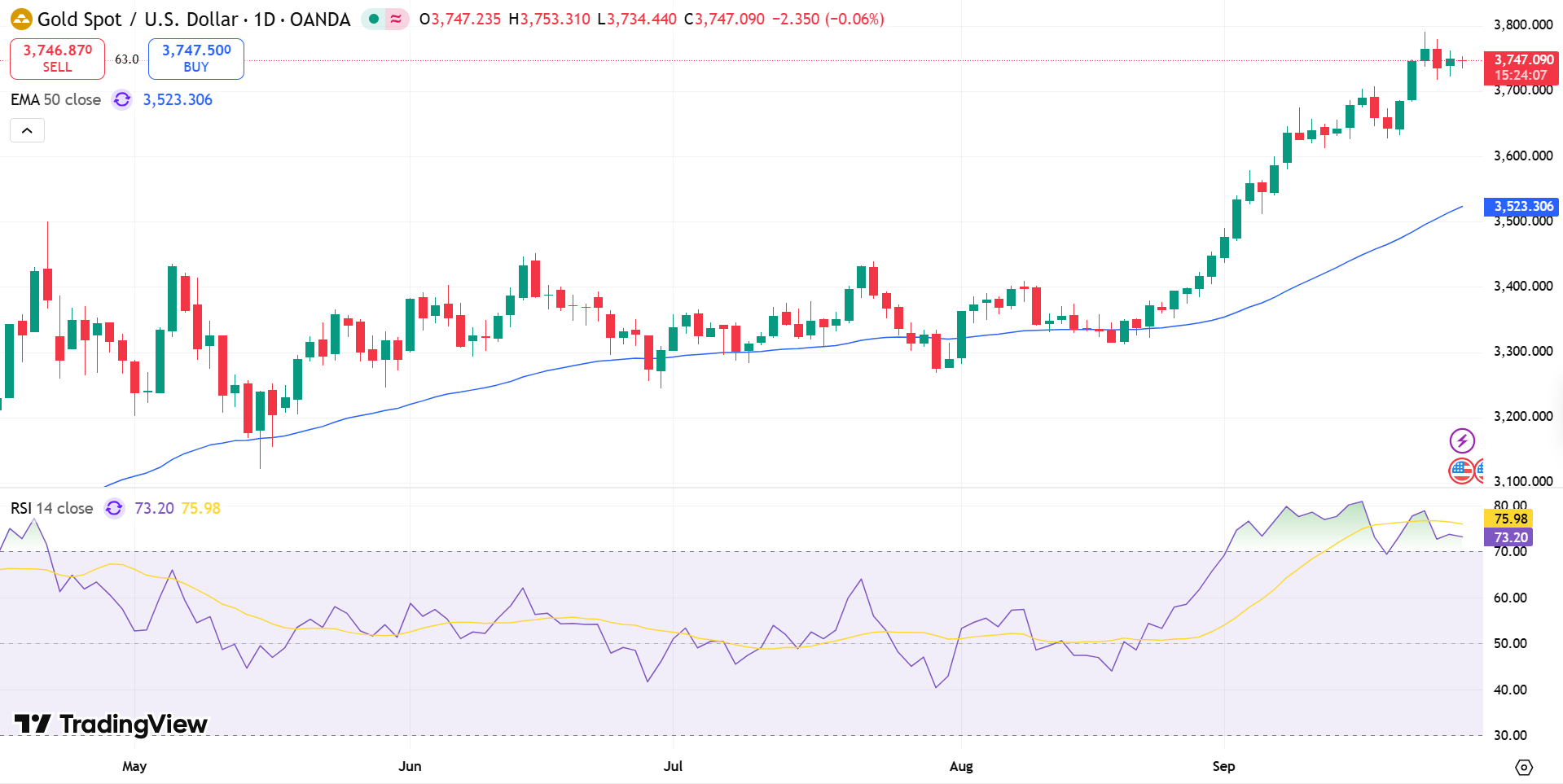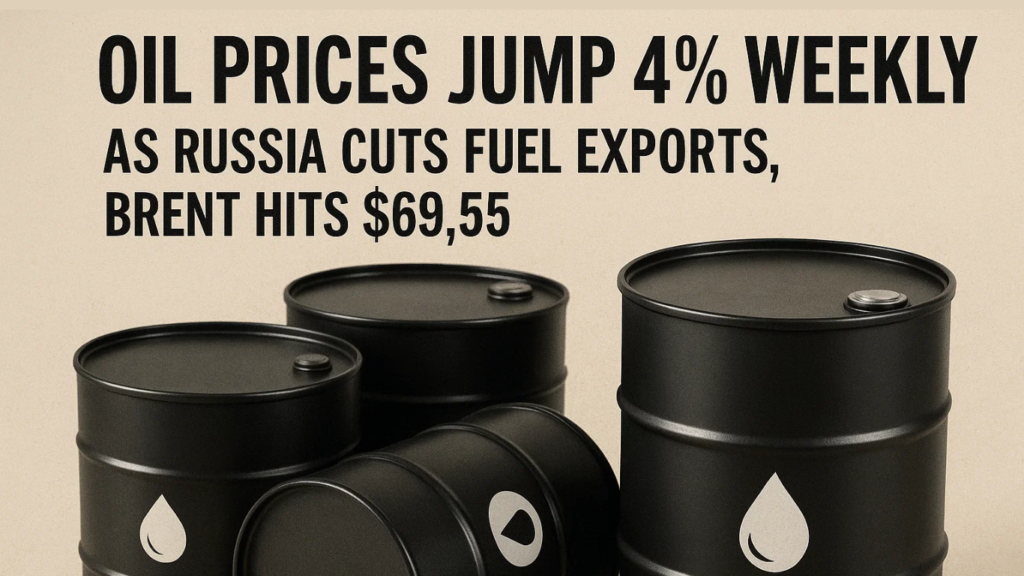Oil prices are set for their largest weekly increase in three months as geopolitical tensions and supply disruptions tighten the market. On Friday, Brent crude futures rose 13 cents, or 0.2%, to $69.55 a barrel, while U.S. West Texas Intermediate (WTI) gained 22 cents, or 0.3%, to $65.20.
Both benchmarks are up more than 4% this week, the steepest rise since mid-June. The rally has been driven by a mix of Russian export restrictions, Ukrainian drone strikes, and surprise U.S. inventory declines.
According to IG analyst Tony Sycamore, the combination of Ukraine’s attacks on Russian oil infrastructure and NATO’s warnings about potential airspace violations “reinforced investor concerns about tightening supply.”
Russia Restricts Fuel Exports
The market’s momentum intensified after Russian Deputy Prime Minister Alexander Novak confirmed a partial ban on diesel exports until year-end and an extension of its gasoline export ban.
These measures come as Russian refineries face disruptions from Ukrainian drone strikes, pushing the country closer to reducing crude output. Several Russian regions are already experiencing shortages of certain fuel grades.
Analyst Daniel Hynes at ANZ noted that NATO’s warnings about potential retaliation could trigger “further sanctions on Russia’s oil industry,” exacerbating the pressure on global supplies.
Key supply factors shaping the market this week:
- Russia’s export ban covers both diesel and gasoline.
- Drone strikes have reduced refining capacity.
- U.S. crude inventories posted an unexpected draw.
- Brent and WTI hit their highest levels since August 1.
Global Growth and Kurdistan Exports Pressure Gains
Despite the bullish setup, some factors capped further price gains. The U.S. Commerce Department reported GDP growth at an annualized 3.8% last quarter, stronger than expected. Robust economic data could slow the pace of Federal Reserve interest rate cuts, limiting near-term oil demand growth.

Additionally, the Kurdistan Regional Government (KRG) announced that oil exports from northern Iraq would resume within 48 hours, potentially restoring up to 500,000 barrels per day to the global market.
ANZ’s Hynes highlighted the balancing effect: “Geopolitical tensions reversed earlier losses after a landmark agreement to restart Kurdistan exports, easing some of the supply squeeze.”
Conclusion:
With Brent above $69 and WTI above $65, oil markets are caught between bullish supply shocks and bearish growth headwinds. While Russia’s restrictions and Ukraine’s strikes have ignited the steepest rally since June, the resumption of Kurdish exports and resilient U.S. growth could temper further upside.


